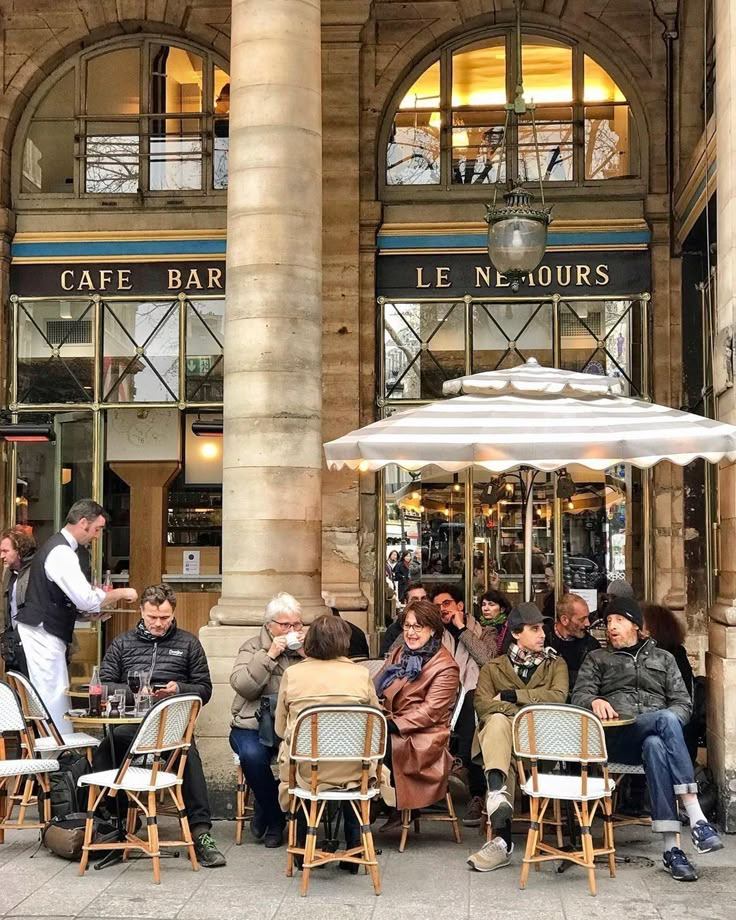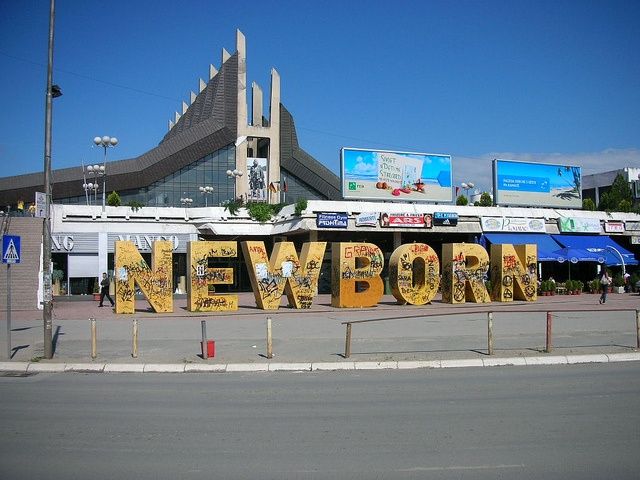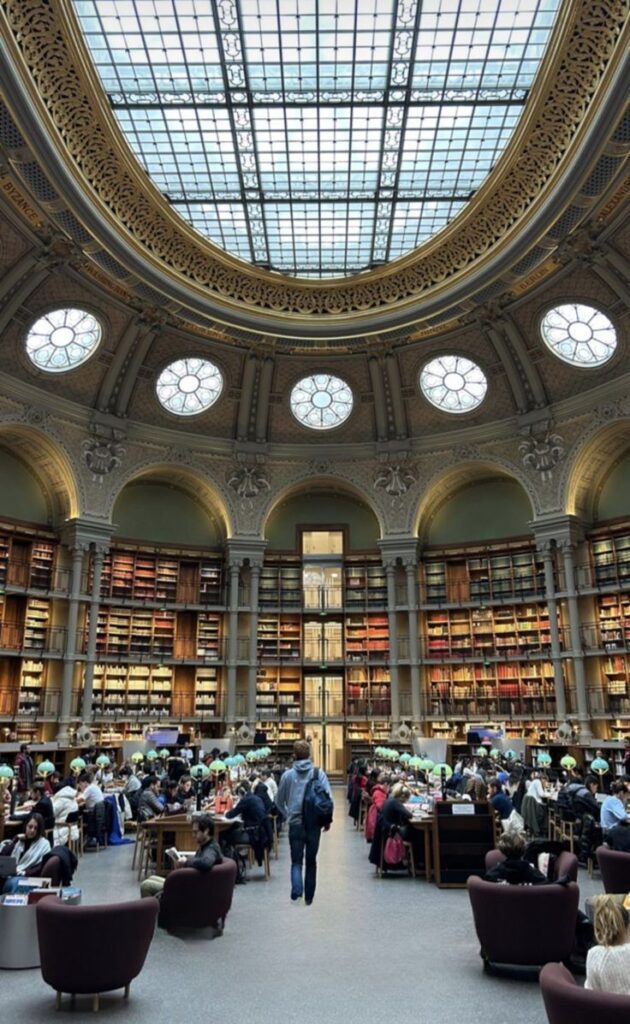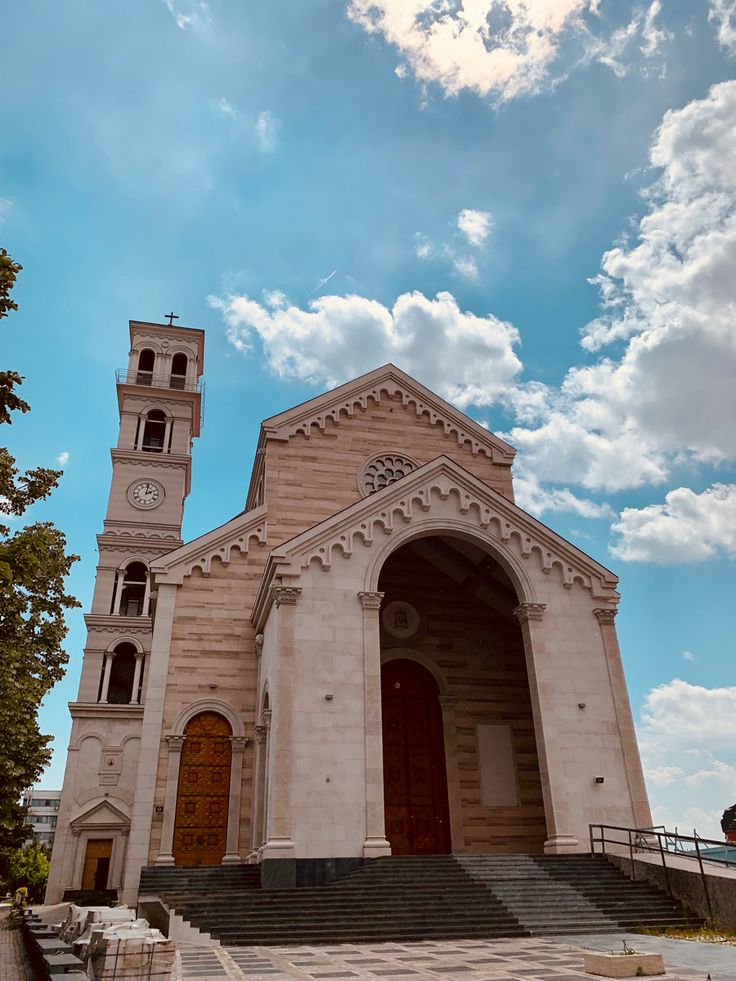Introduction:
Think Kosovo is just a land of conflict and recovery? Think again. Pristina, the vibrant capital, challenges this perception, offering a blend of rich history, youthful energy, and a thriving cafe culture that often goes unnoticed by most tourists. With a past that speaks to resilience and a future full of promise, Pristina is a city that deserves a closer look. But how do you navigate its streets, uncover its stories, and experience its true spirit?
This guide is your key to exploring Pristina – an authentic destination for independent travellers, culture seekers, and budget-conscious adventurers. Here, we’ll take you through the must-see landmarks, share the city’s hidden gems, and provide the practical tips you need to ensure a safe, enriching visit.
From iconic historical sites to intimate cafes and vibrant street art, Pristina offers much more than meets the eye. Armed with our insights, you’ll gain the confidence to explore this dynamic city, connect with its local vibe, and make the most of your time – all while sticking to your budget. Whether you’re here for a quick weekend or a more extended stay, Pristina promises an experience that’s both unforgettable and unique.
Pristina’s Unique Vibe: Beyond the Landmarks
Understanding the City’s Energy:
Pristina is a city that pulses with an energy uniquely its own. It’s a place where the weight of history is deeply felt, but the vibrancy of the present is impossible to ignore. There’s a resilient undercurrent that runs through the streets, a reminder of Kosovo’s tumultuous past, but it’s paired with an undeniable youthful optimism that feels fresh at every corner. As you walk through the city, you’ll sense the delicate balance between the past and the future, with modernity fusing seamlessly into the remnants of old-world charm. Pristina is constantly evolving—both in terms of its physical landscape and the mindset of its people.
The social fabric of the city is centred around its cafe culture. Here, cafes serve as more than just places to sip coffee—they are the heartbeat of Pristina, offering an authentic space where locals gather, connect, and unwind. The vibe is both laid-back and dynamic, with conversations flowing as freely as the espresso. The city’s atmosphere exudes warmth, and it feels like you’re walking through a place where every street corner tells a story. Whether you’re in the midst of the historic city centre or sipping a drink in one of its vibrant cafes, there’s a sense of community that makes Pristina feel both intimate and inclusive.
The Heart of Social Life: Cafe Culture
One of the most vital parts of Pristina’s social life is its cafe culture, and it’s something you must experience firsthand. The city is brimming with cafes, each offering its unique atmosphere. Locals don’t just come here for coffee—they come to meet friends, discuss politics, or relax after a busy day. Cafes in Pristina are gathering spots where ideas are exchanged, friendships are forged, and conversations can range from light-hearted banter to deep discussions about the future of the region.
There’s a variety to suit every taste: traditional coffee houses with that old-school charm, modern, minimalist spaces with sleek designs, and rooftop cafes that offer sweeping views of the city. Whether you’re in the mood for a strong Turkish coffee or a modern flat white, you’ll find a spot to relax, sip, and enjoy the local vibe.
For a truly authentic experience, seek out cafes like Taverna Tirona, which is known for its laid-back atmosphere and delicious local specialities, or Dit’ e Nat’, a cafe that doubles as an artsy hangout, hosting exhibitions and cultural events. These are not your generic international chains but places where locals come together to share moments of connection.
A City in Transition
Pristina is a city in constant transition—proud of its past but always looking towards the future. You’ll see the marks of its recent history in its architecture, where the remnants of the Ottoman and Yugoslav eras mix with sleek, modern structures. There’s a fascinating contrast between buildings that stand as testaments to the city’s history and newer developments that symbolize Kosovo’s ongoing progress. The blend of architectural styles creates a unique and sometimes striking cityscape, where each building seems to tell a story of resilience, transformation, and the promise of something new.
A particularly insightful way to understand this city’s evolution is through its art and architecture. The National Library, for example, is a striking piece of architecture that stands as a testament to Pristina’s modern aspirations. The city’s public art scene—whether it’s a mural or an installation—also speaks to its youthful spirit and desire for cultural expression. By exploring the city through its art and architecture, you’ll begin to see how Pristina is rewriting its narrative, creating a future that’s built on both its rich history and its forward-thinking vision.

Must-See Attractions & Key Experiences in Pristina
Pristina, while compact, offers a wealth of historical, cultural, and modern attractions that captivate visitors. Whether you’re exploring the city centre, the historical core, or areas slightly outside, each one brings a unique insight into the soul of Kosovo’s capital. Here’s a guide to the must-see landmarks and experiences.
1. Newborn Monument
- Description & Visual Impact:
The Newborn Monument is one of Pristina’s most iconic and influential symbols. It was unveiled on February 17, 2008, the day Kosovo declared independence. The monument is composed of large metal letters spelling “NEWBORN,” each painted in bright colours, creating an ever-changing visual impact that depends on the message displayed on it each year. The changing design reflects Kosovo’s evolving identity.
- Cultural Context & History:
As a symbol of independence, the Newborn is central to Kosovo’s national identity and serves as a reminder of the country’s path to self-determination. The monument’s annual transformation makes it a living symbol of Kosovo’s growth and change.
- Location:
Bill Clinton Boulevard, Pristina city centre

2. National Library of Kosovo
- Description & Architecture:
Known for its controversial design, the National Library of Kosovo is often described as futuristic and even surreal. Its exterior is covered with metal mesh and topped with hundreds of dome-like structures, making it one of the most unique buildings in the Balkans. While some view its architecture as unconventional, it undoubtedly reflects Kosovo’s drive to create a modern identity.
- Cultural Significance:
The library houses thousands of books, manuscripts, and historical documents, serving as a cultural and intellectual hub. Despite the external design being a topic of debate, the building stands as a symbol of Kosovo’s artistic aspirations.
- Practical Information:
- Location: Nëna Terezë Square, near the city centre
- Visiting Tips: Primarily admired for its striking exterior. Visitors can take photos from outside, as the interior is often closed to the general public.

3. Imperial Mosque (Xhamia e Mbretit)
- Description & Architecture:
Built in the 15th century by the Ottoman Empire, the Imperial Mosque is one of the oldest and most significant buildings in Pristina. Its beautiful yet straightforward Ottoman-style design features a large central dome and slender minaret. The mosque remains a place of worship and a testament to Kosovo’s Islamic heritage.
- Cultural Context & History:
The mosque is an important historical landmark, having served as a focal point for local Muslim communities for centuries. It serves as a reminder of Kosovo’s Ottoman heritage and its enduring presence in the region.
- Practical Information:
- Location: Near the city centre, close to the old bazaar
- Dress Code: Modest attire required; remove shoes before entering
- Typical Visiting Hours: 9:00 AM – 6:00 PM (except during prayer times)
4. Cathedral of Saint Mother Teresa
- Description:
A striking modern church, the Cathedral of Saint Mother Teresa is a vital symbol of Kosovo’s rich religious diversity and tolerance. The cathedral, named in honour of Mother Teresa, who was born in Skopje but had strong ties to Kosovo, stands as a modern and spiritual beacon in the city.
- Cultural Context & History:
The cathedral plays a pivotal role in post-war Kosovo, symbolizing peace and unity across religious lines. Mother Teresa’s legacy is deeply respected, and the church serves as a centre for interfaith dialogue in a city marked by its diverse religious heritage.
- Practical Information:
- Location: Mother Teresa Square, Pristina
- Visiting Hours: 9:00 AM – 5:00 PM
- Climbing the Tower: Available when open to visitors

5. Kosovo Museum
- Description:
The Kosovo Museum provides an in-depth exploration of the country’s rich history and cultural heritage. It houses a vast collection of archaeological artefacts, ethnological exhibits, and historical items that tell the story of Kosovo’s past—from prehistoric times to the present.
- Cultural Context & History:
The museum is a treasure trove of artefacts artefacts that offer a deeper insight into Kosovo’s development, struggles, and cultural evolution. The exhibits trace the area’s history from ancient Illyrian civilizations to the more recent conflict and eventual independence.
- Practical Information:
- Location: Sheshi Nene Tereza
- Entrance Fee: €2
- Opening Hours: 9:00 AM – 4:00 PM
6. Pristina City Park
- Description:
For a moment of tranquillity, Pristina City Park is a wonderful escape. Located near the city centre, it’s the perfect place for a peaceful walk or a picnic by the small lake.
- Location:
Near the National Library
Summary
Here’s the summary of Must-See Attractions & Key Experiences in Pristina:
| Attraction | Location | Entrance Fee | Opening Hours | Dress Code/Notes |
| Newborn Monument | Bill Clinton Boulevard, City Center | Free | Always open | N/A |
| National Library of Kosovo | Nëna Terezë Square, City Center | Free | Exterior view anytime | N/A |
| Imperial Mosque | Old Bazaar Area | Free | 9:00 AM – 6:00 PM (non-prayer times) | Modest attire: remove shoes before entering |
| Cathedral of Saint Mother Teresa | Mother Teresa Square, City Center | Free | 9:00 AM – 5:00 PM | N/A |
| Kosovo Museum | Sheshi Nene Tereza, City Center | €2 | 9:00 AM – 4:00 PM | N/A |
| Ethnological Museum | Emin Gjiku Complex, Near City Center | €3 | 9:00 AM – 5:00 PM | N/A |
| Skanderbeg Square | City Center | Free | Always open | N/A |
| Pristina City Park | Near National Library | Free | Always open | N/A |
| Germia Park | 5 km outside City Center | Free | Always open | N/A |
Getting Around Pristina
Pristina is a compact city, and getting around is relatively easy, whether you prefer walking, using public transportation, or taking a taxi. Here’s a guide to help you navigate the city efficiently and affordably.
Navigating the City Center
The heart of Pristina is easily walkable, making it simple for visitors to explore on foot. Most of the major attractions, from the Newborn Monument to the National Library and Skanderbeg Square, are located within a short walking distance from each other. Walking around the city centre not only allows you to see the sights at your own pace but also provides an opportunity to immerse yourself in the vibrant street life and cafe culture. The city’s layout is straightforward, with wide sidewalks, pedestrian zones, and ample green spaces, making it pleasant to navigate.
Public Transport
Pristina has a local bus system that covers most of the city and the surrounding areas. While it’s not as expansive or frequent as in larger cities, it’s a reliable option for getting around, especially for destinations outside the city centre.
- Bus System Overview:
The Transporti Urban company operates the city’s buses. There are several bus routes connecting key areas of the city. Most routes run from early morning until late evening, with intervals of about 15-20 minutes during peak hours and longer during off-peak hours.
- How to Use the Bus System:
Tickets are typically purchased on the bus. The price is affordable, with a single ride costing approximately €0.50. It’s recommended to carry small changes for the fare, as not all drivers may have changes for larger bills.
- Key Routes for Tourists:
- Route 1: This bus connects the central bus station to the city centre, passing by many key sights.
- Route 2: Ideal for reaching Germia Park or areas on the outskirts of the city.
- Route 3: Serves the route to the National Library of Kosovo and other cultural sites in the southern part of the city.
- Google Maps:
Google Maps is an excellent tool for navigating Pristina’s public transportation system. The app provides real-time bus schedules and route information, ensuring you can find the quickest and easiest ways to your destinations. It’s an essential app to have when using public transport in the city.
Taxis & Ride-Sharing
Taxis are readily available in Pristina, making them a convenient option for travellers who prefer not to walk or wait for a bus. However, to ensure a fair rate, it’s best to negotiate the fare before starting the journey.
- Official Taxis:
Official taxis in Pristina are marked with a taxi sign and typically have meters. However, many drivers prefer to agree on a fare before departure, especially for longer distances. It’s advisable to confirm the price upfront to avoid misunderstandings.
- Expert Tip:
Always agree on the price before getting into the taxi, especially if you’re travelling to areas outside the city centre. Taxis may not always use their meters for longer trips, so agreeing on a price ensures clarity and transparency.
- Ride-Sharing Apps:
Ride-sharing services like Bolt (formerly Taxify) are available in Pristina. These apps are a convenient and transparent alternative to traditional taxis, as the fare is calculated upfront, and you can track your ride.
- Typical Taxi Costs:
- Short ride within the city centre: around €3-€5
- Longer ride (e.g., to Germia Park or the airport): approximately €10-€15
Recommendation:
For convenience and a faster, more direct route, taxis are the best option, especially if you have luggage. However, if you’re on a tight budget, the public bus is an affordable, albeit slower, alternative.
| Mode of Transport | Details | Cost | Journey Time | Additional Notes |
| Walking | The cityccentrentre and key attractions are easily accessible on foot. | Free | Varies (short distances) | Perfect for exploring at your own pace. |
| Public Bus | Several routes cover the city and outskirts. | €0.50 per ride | 15-20 minutes (within city) | Use Google Maps for route planning. |
| Taxi | Available throughout the city. | €3-€5 (short), €10-€15 (longer) | 10-20 minutes (within city) | Negotiate the fare before departure. |
| Ride-Sharing (Bolt) | Available via the Bolt app. | Similar to taxis | 10-20 minutes | Transparent pricing via an app. |
| From PRN Airport (Taxi) | Direct ride from the airport to the city centre. | €15-€20 | 20 minutes | Fastest option. |
| From PRN Airport (Bus) | Local bus service from the airport to the city. | €2 | 30-40 minutes | The cheapest option, but slower. |
| From PRN Airport (Shuttle) | Hotel shuttle service (if available). | Varies (may be free) | 20-30 minutes | Check with your hotel for availability. |
Getting around Pristina is straightforward and affordable, whether you choose to walk, use public transportation, or opt for a taxi.
Food and Drink: A Taste of Pristina
Pristina’s food scene offers a delightful blend of traditional Balkan flavours and modern culinary twists. Whether you’re enjoying a casual meal at a cafe, indulging in local specialities, or trying out contemporary restaurants, there’s something for every taste and budget. Here’s a guide to the must-try dishes and drinks, along with recommendations on where to enjoy them in Pristina.
| Dish/Drink | Description | Where to Try | Price Range |
| Flija | A layered dough dish filled with cream and butter, cooked over a fire | Stack, Han | €6-€10 |
| Qebapa | Grilled minced meat sausages served with flatbread and onions | Street food stalls, Taverna Tirona | €3-€5 |
| Byrek | Flaky pastry filled with cheese, meat, or spinach | Local bakeries (near Mother Teresa Square) | €1-€3 |
| Turkish Coffee | Strong, traditional coffee served in small cups | Any cafe in the city centre | €1-€2 |
| Rakia | Balkan fruit brandy served as a shot | Local bars and cafes | €2-€3 |
| Local Beers (Peja, Birra Pristina) | Kosovo’s popular local beers | Bars and restaurants throughout Pristina | €2-€3 |
While most menus are in Albanian, using a translation app on your phone can help you better navigate the local offerings. Apps like Google Translate can instantly translate menus, making it easier to select the perfect dish for your taste.
While tap water in Pristina is generally safe to drink, bottled water is also widely available, especially in restaurants or cafes. If you’re in doubt, opt for bottled water to stay hydrated.
Pristina’s food and drink offerings are as rich and varied as the city itself, making it an essential part of your cultural exploration. Whether you’re dining on Flija, sipping Turkish coffee, or enjoying a local beer, the city invites you to savour its unique culinary landscape.
Safety Tips and Local Customs
Pristina is generally a safe and welcoming city, but, like any destination, it’s essential to remain aware of your surroundings and respect local customs. Here’s a quick guide to help ensure a smooth and enjoyable visit.
General Safety
Pristina is considered safe for tourists, with most areas being walkable and friendly. However, like any city, it’s essential to remain vigilant, especially in crowded places or tourist spots, where pickpocketing can occasionally occur.
- Keep your belongings close, particularly in busy areas or markets. Carry only what you need, and consider using a money belt for extra security.
- Official travel advisories typically report Pristina as a safe destination. For peace of mind, check the latest guidance from your country’s embassy or travel websites before your trip.
Cultural Etiquette
Kosovars are known for their warm hospitality and are generally friendly and welcoming to visitors. It’s common to be offered food or drinks, especially when you engage with locals in cafes or shops.
- Respect local customs, especially when visiting religious sites such as mosques or churches. A modest dress is recommended, covering the shoulders and knees when entering places of worship. Women may be asked to cover their heads when entering mosques.
- Kosovars take pride in their heritage, and it’s always appreciated when visitors ask for local recommendations. Don’t hesitate to strike up a conversation—it’s a great way to learn about the culture and get insider tips.
Money Matters
Kosovo uses the Euro (€) as its currency, and it’s best to carry some cash, especially when visiting smaller shops or local markets. Larger establishments, such as hotels, restaurants, and major shops, will generally accept credit cards.
- Always carry some cash in Euros, as smaller establishments may not accept credit cards. ATMs are widely available throughout the city, and currency exchange services are easily accessible.
- To avoid confusion with exchange rates, consider using a currency converter app on your phone to quickly check the current rates.
Staying Connected
For easy communication and navigation, it’s a good idea to get a local SIM card or eSIM for data and calls. Mobile coverage is excellent in Pristina, and having data will help you navigate the city more efficiently.
- Local SIM Card/eSIM Providers: Providers such as Vala and IPKO offer affordable SIM cards with data packages tailored for tourists. You can purchase them at the airport or in local stores.
- Product Recommendation: Consider using a local SIM card or eSIM to stay connected during your trip. This will help you use maps, translation apps, and other services without relying on expensive international roaming.
By following these safety tips and cultural customs, you can enjoy your time in Pristina while respecting the local way of life. Stay aware, embrace the hospitality, and you’ll have an unforgettable experience!
Key Attractions Summary Table
| Attraction | Type (Landmark, Museum, Park, etc.) | Approx. Visit Time | Cost | Key Highlight |
| Newborn Monument | Landmark/Symbol | 15-30 minutes | Free | Symbol of Independence, changing design |
| National Library of Kosovo | Landmark/Architecture | 15-30 minutes | Free | Unique architecture |
| Imperial Mosque | Religious Site | 20-40 minutes | Free | Historical Ottoman architecture |
| Cathedral of Saint Mother Teresa | Religious Site | 20-40 minutes | Free | Modern architecture, tower views (check availability) |
| Kosovo Museum | Museum | 1-2 hours | Low fee | Historical and Ethnographic exhibits |
| Ethnological Museum | Museum/Historical Site | 1-1.5 hours | Low fee | Traditional Ottoman-era houses and life |
Conclusion
Pristina is a city that offers a remarkable blend of history, culture, and vibrant life. From its Ottoman and Yugoslav heritage to its modern-day resilience, Pristina invites you to explore not just its landmarks but the spirit of a city that has overcome challenges and embraced the future. Its unique monuments, rich traditions, and thriving cafe culture offer an authentic experience for every traveller.
Exploring Pristina is more than just a journey through time—it’s a chance to connect with a community that is proud of its roots and optimistic about its future. Whether you’re a history enthusiast, a culture lover, or simply someone seeking a new adventure, Pristina offers something for everyone.
So, come with an open mind, engage with the locals, savour the food, and experience the charm of Kosovo’s capital firsthand. With its resilience and energy, Pristina promises an enriching and unforgettable visit.
